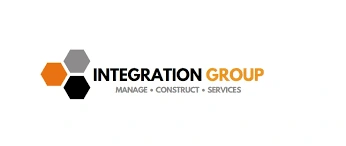
In the complex world of construction, every project involves multiple trades and systems, each with its own set of requirements and intricacies. The coordination of these mechanical, electrical, and plumbing (MEP) systems is essential to ensure that a building functions optimally and efficiently. MEP coordination is a critical process that offers numerous benefits in terms of project efficiency, cost savings, and overall quality. In this blog, we’ll explore the advantages of MEP coordination and why it’s an indispensable aspect of modern construction projects.
Reduced Conflicts and Rework
MEP coordination involves the careful planning and positioning of mechanical, electrical, and plumbing systems to minimize conflicts and clashes during construction. When these systems are not properly coordinated, it can lead to costly delays and rework. By addressing potential conflicts upfront, project managers can avoid the need to tear down walls, re-route ductwork, or rewire electrical systems, saving both time and money.
Enhanced Safety
Safety is a top priority in the construction industry. Uncoordinated MEP systems can pose significant safety risks to workers. For instance, if electrical conduits are haphazardly placed, they may inadvertently interfere with plumbing or HVAC components, increasing the likelihood of accidents. Proper MEP coordination ensures that systems are installed with safety in mind, reducing the risk of accidents and injuries on the construction site.
Cost Savings
Efficient MEP coordination results in substantial cost savings throughout a project’s lifecycle. By minimizing conflicts and rework, projects are completed on time and within budget. Additionally, energy-efficient designs, often a product of proper MEP coordination, can lead to lower operational costs for the building over time. Reduced maintenance and utility expenses translate into long-term financial benefits for building owners and operators.
Improved Energy Efficiency
Energy efficiency is a critical consideration in modern construction. Proper MEP coordination allows for the integration of sustainable building systems, such as energy-efficient HVAC systems, advanced lighting controls, and renewable energy sources. This results in lower energy consumption and a reduced carbon footprint, which aligns with environmental regulations and contributes to a building’s overall sustainability.
Better Aesthetics and Space Utilization
Proper MEP coordination can also lead to better aesthetics and space utilization within a building. When systems are seamlessly integrated into the design, it allows architects more creative freedom in designing spaces. Concealed or well-organized MEP systems help maintain clean, unobstructed interior spaces, enhancing the overall appearance of the building.
Streamlined Maintenance and Repairs
Well-coordinated MEP systems are easier to maintain and repair. Clear documentation of system layouts and efficient designs make it simpler for facility managers to address issues when they arise. This reduces downtime, minimizes disruption to building occupants, and ensures the longevity of the systems.
Compliance with Regulations
MEP coordination plays a crucial role in ensuring that buildings comply with safety and environmental regulations. Failing to coordinate these systems properly may result in non-compliance, leading to costly fines and legal issues. A proactive approach to MEP coordination helps ensure that a building meets all relevant codes and standards.
Improved Occupant Comfort
Ultimately, MEP coordination contributes to improved occupant comfort. Well-designed HVAC systems provide optimal temperature control, while effective plumbing systems ensure consistent water supply and drainage. This leads to a more pleasant and productive environment for those who live or work in the building.
In conclusion, MEP coordination is an integral part of construction projects, offering numerous benefits that positively impact project efficiency, cost savings, and the overall quality of the final product. By reducing conflicts, enhancing safety, and promoting energy efficiency, MEP coordination ensures that buildings are not only built on time and within budget but also operate optimally and sustainably over the long term. As construction practices continue to evolve, MEP coordination remains a fundamental aspect of creating safe, efficient, and environmentally responsible structures. It’s a practice that benefits builders, owners, occupants, and the environment alike.
Draftech – Your Project, Our Expertise
Testimonials
Thank you for all your efforts on our projects; they have been an invaluable contribution to their success. We look forward to working with you on future projects.
Ian Ferguson MPM Group
Jess and Karl at Draftech were amazing. The communication from the start was prompt, and the entire process was extremely easy. We needed their knowledge on Air Schematics, and they had made one up for our buildings that we service. Thanks so much, and we will be using you guys in the future. Cheers, Air Control Australia.
Greg Colebrook AirControl Australia
With Draftech’s thorough understanding of building services modelling and close attention to detail, Forth has been afforded the opportunity to outsource some of our BIM projects with absolute confidence in the accuracy of the final product.
Gary Murdoch Forth Consulting
Very professional and efficient organization. Delivered a great product to a tight deadline.
ACE Power
Karl and the team are very professional and have a vast knowledge of BIM coordination.
Dwayne Willaims Babinda Electrics
We had multiple large projects with tight deadlines and needed a company we could trust. The teams delivery, attention to detail and understanding of what is being designed is always executed to a high standard.
Martin O’Donovan Envar Engineers
Draftech offered a flexible and reliable approach to working collaboratively with our team. They met our expectations and quality requirements and also offered up new ideas.
Draftech have proven to be a valuable and trustworthy resource and we will continue to work with Draftech on other projects.
Simon Marsden Umow Lai
Draftech is different from others in the professionalism and features they provide.
The ability to walk through projects in real time online provides invaluable insight into problem areas and helps provide an efficient resolution on the spot without many phone calls, emails and the necessity for us to paw through countless drawings to understand the issues.
Todd Morris Manager - Air mech
Draftech were put forward to FIP Electrical as the solution to Coordinate, Model, carry out clash detection, provide Electrical Services Shop Drawings, as built documentation and completed electrical model.
Simon Thorpe FIP Electrical
In close collaboration Draftech set up all our systems and model deliverables. In this process Draftech have proven to be a valuable resource for us and demonstrated commitment, understanding and professionalism.
David Skelley DJCoalition
Draftech’s attention to detail and proactive nature throughout the project assisted us in identifying issues before becoming evident on site, saving us both time and unexpected costs.
Matt Payne PJM Engineering Services
They delivered very high quality Revit models and associated 2D documentation at key milestones, working to a tight budget and in strict accordance with the Architects’ BIM requirements.
Peter Thomas Geoff Hesford
We found Draftech’s work to be of high standard and the team delivered exactly as agreed, in fact, when we considered the project complete, Draftech put further resources into the project as they were not satisfied.
John Johnson Beca
Engaging Draftech during design gave us the tools to make smart decisions.
Hansen Yuncken Design Manager - Michael Harkins
The drafting service is timely, reliable and fit for purpose for the built environment.
Peter Harvey Harvey Industries
Draftech stands apart from other drafting services that we have previously used in their attention to detail and ability to adapt to the individual client’s requirements.
Doug Holt McCaig Aircon
I can confidently recommend Draftech as a solid and reliable supplier, and experts in their field. I look forward to working with them again in the near future.
Chris Behan Norman Disney & Young
After seeing the benefits Draftech provided us on the Townsville Hospital Redevelopment we have set up a relationship with Draftech and intend to continue to use their BIM knowledge and skills for our future projects.
Brad Lund Energy Power Systems
Draftech has no competition as they are in a class of their own.
John Boyes Babinda Electrics
Draftech Developments Drafting and Design Capabilities, in conjunction with their outstanding level of Client service and support has provided great solutions to our engineering and Drafting Design portions within our Gorgon Barrow Island Project.
Aaron Hazelton Applied Electro Systems Pty Ltd
Draftech set up necessary systems and workflows very quickly, but also setup auditable estimating and weekly cost tracking processes that we utilised, requiring little maintenance.
TOM PURDON MPM GROUP
































